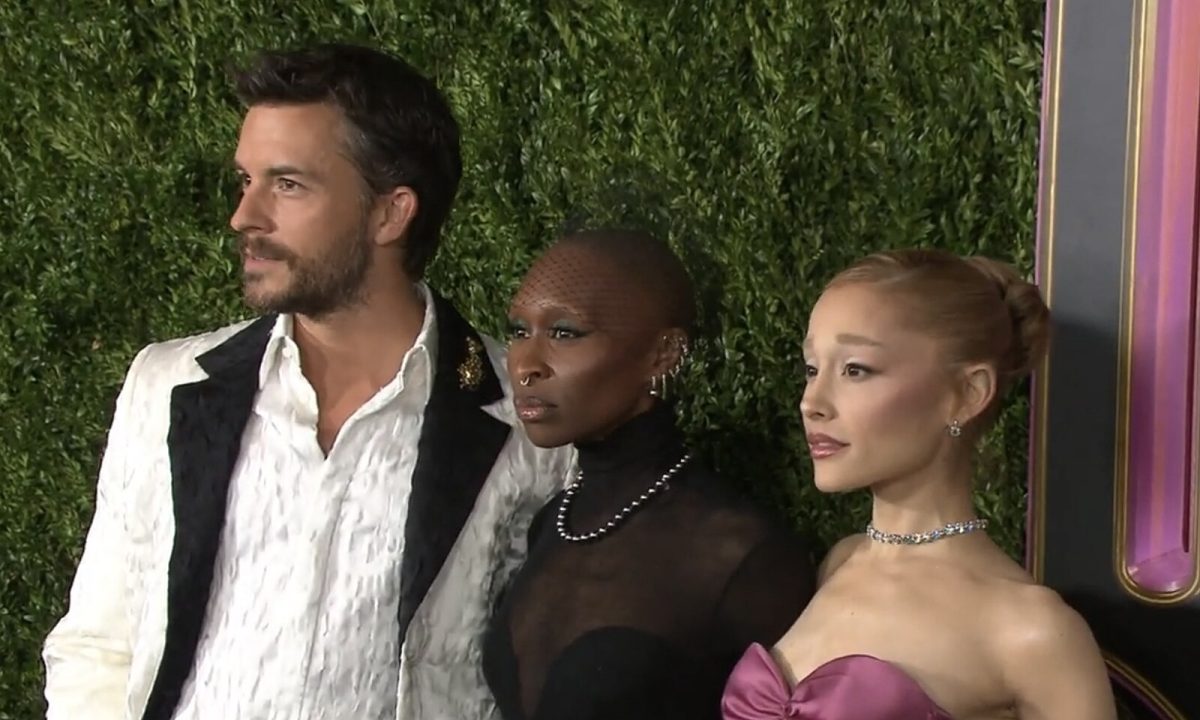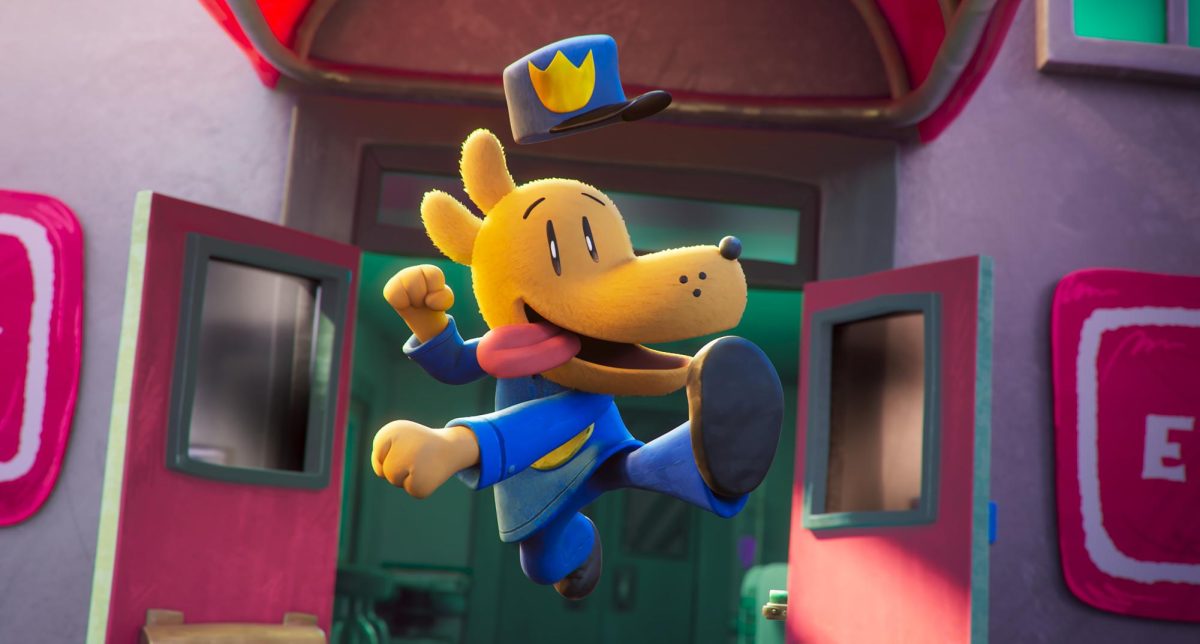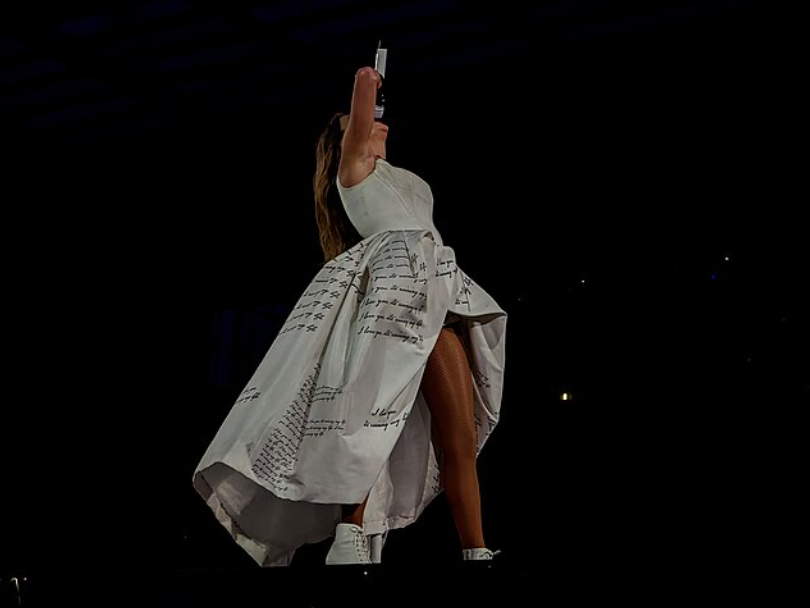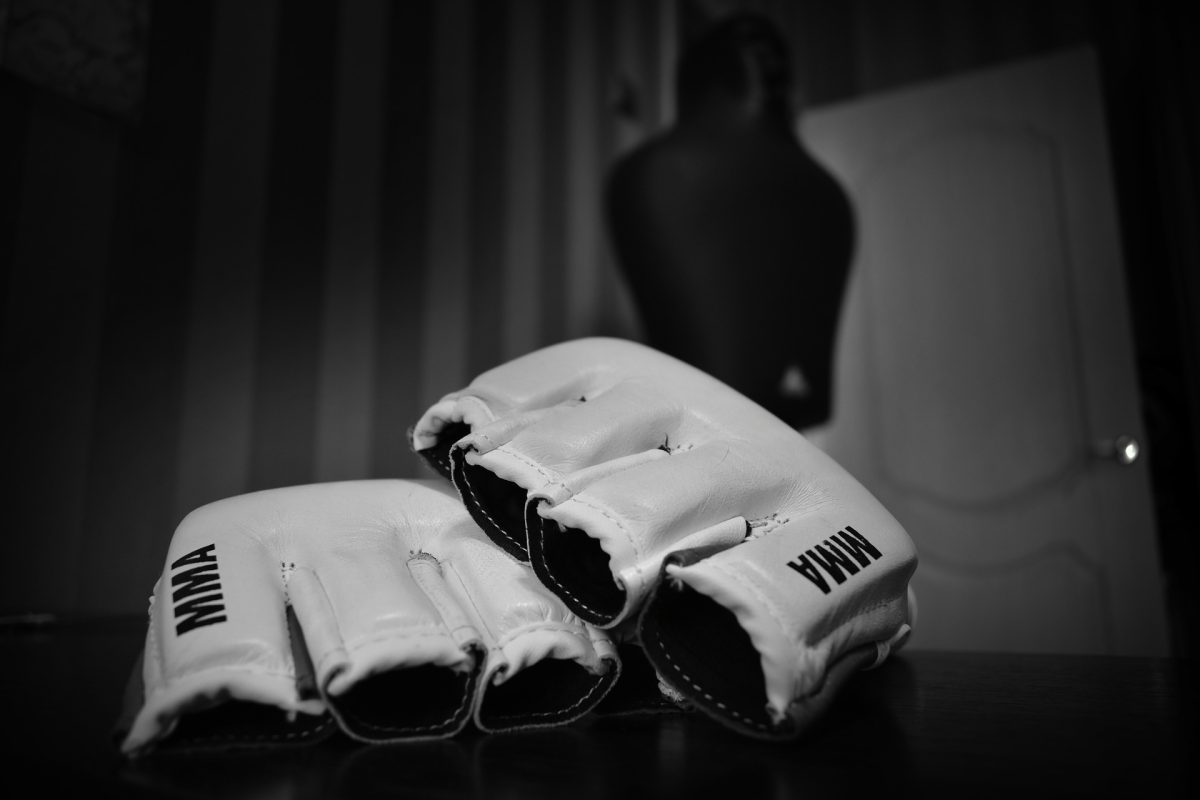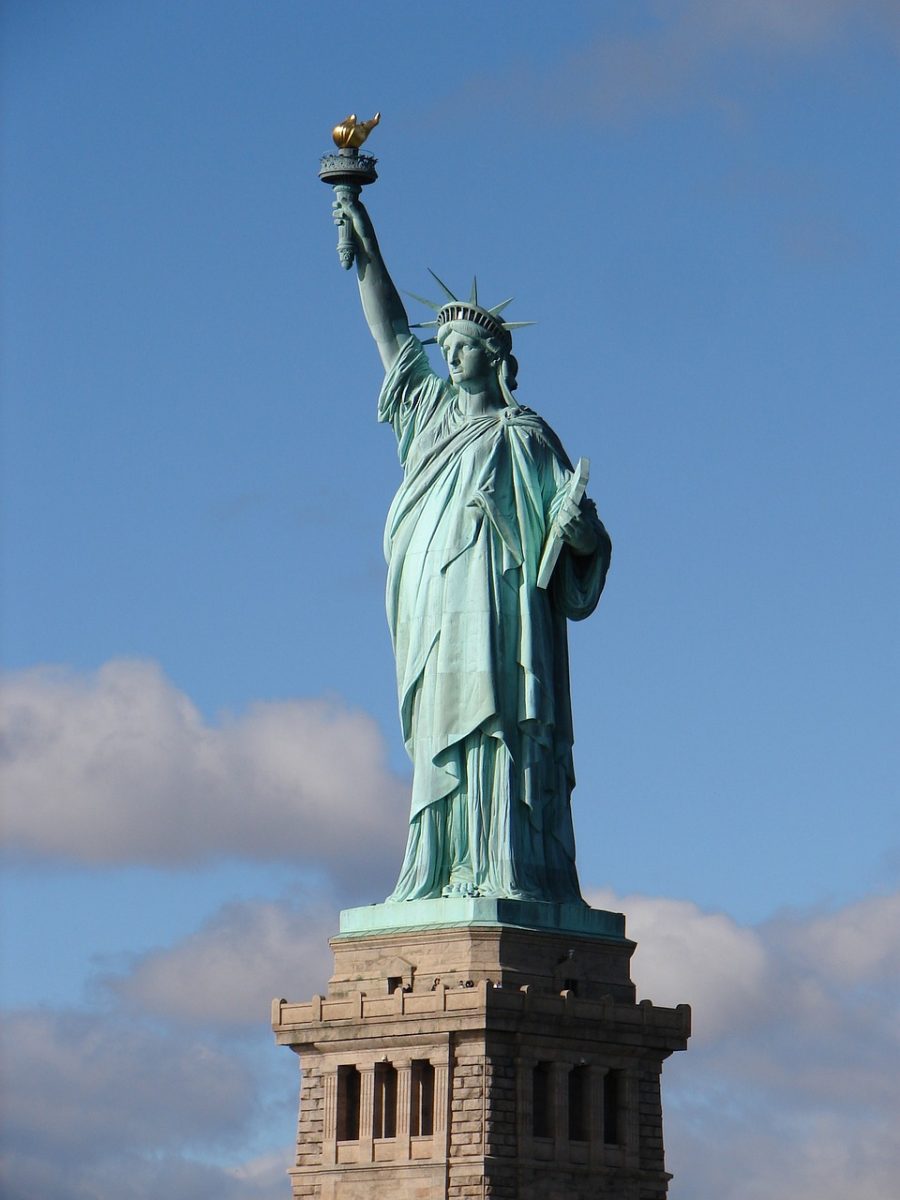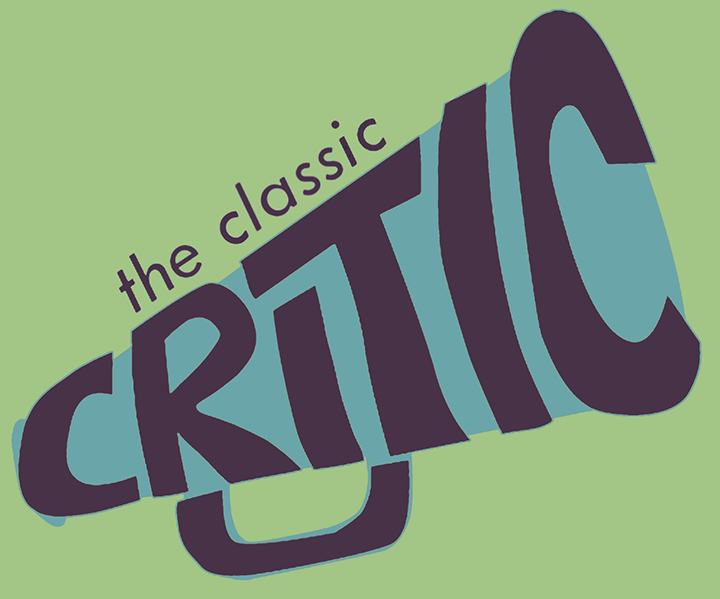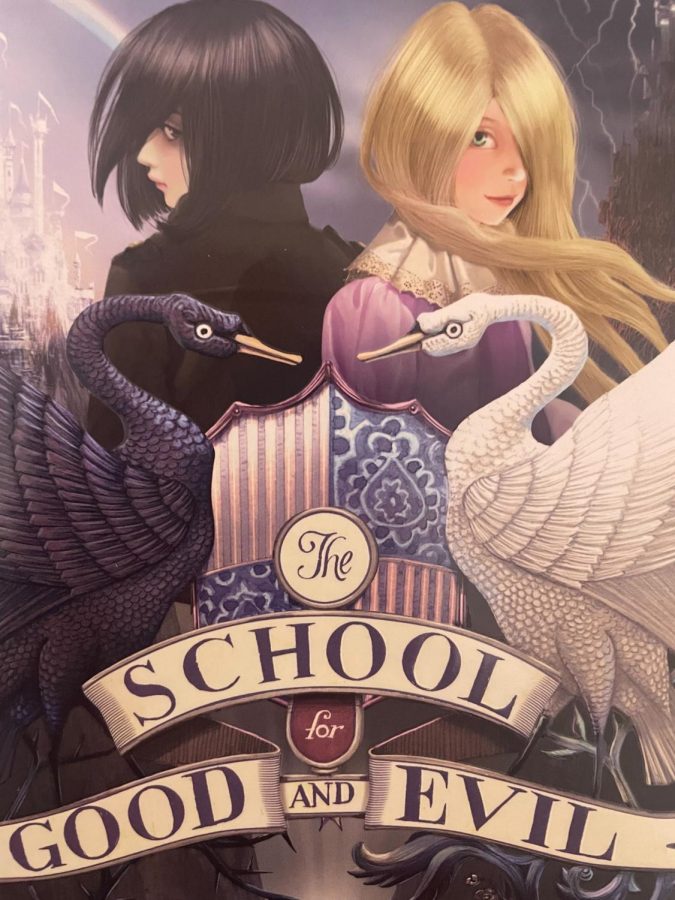The School for Good and Evil review
December 2, 2022
The School for Good and Evil, a novel by Soman Chainani published in 2013, has gained relevance with its new movie adaptation, released on October 19th of this year. The story follows best friends Agatha and Sophie, two girls who are complete opposites, but love each other all the same. A unique spin on fairy tales, The School for Good and Evil teaches important lessons about friendship, goodness, compassion, and love. However, despite its intriguing premise and valuable morals, the book’s writing is chaotic and winding and its characters are underdeveloped and frustrating to read about.
Through their endless bickering and squabbling, Chainani introduces beautiful,vain and selfish Sophie, and quiet, eccentric Agatha, best friends growing up in a small town called Gavaldon. Both girls have always felt like outsiders, with Sophie believing that she was destined for more than a small-town life and Agatha feeling ostracized and hated by the townspeople. It is revealed that every four years, a mysterious figure called the “Schoolmaster” kidnaps two children – one who is kind, sweet, and attractive, and the other unpleasant, peculiar, and ugly. These children are taken to the School for Good and Evil, a mystical school in which fairy tales’ greatest heroes and villains are trained. Whereas Sophie has been dreaming her entire life of being kidnapped to attend the School for Good, and believes that Agatha is destined for the School for Evil, Agatha is content with her quiet life, and wishes for nothing more than to stay friends with Sophie forever.
However, when Sophie is kidnapped, and Agatha goes after her, Sophie is dropped into the bleak, disgusting, and cruel world of the School for Evil, while Agatha is dropped into the prim, pastel, and dazzling world of the School for Good. Although the girls are convinced that there has been a mix-up, as time passes by, the readers realize how good and compassionate Agatha is, whilst Sophie is selfish and unkind. Once Sophie sees that her dream of becoming a princess will never come true, she joins Agatha in her efforts to return home.
Although the beginning of the novel is promising, the book quickly descends into disarray. As Agatha and Sophie try to get home, they face various challenges, from odd school assignments to fierce competitions between Good and Evil to encounters with the mysterious “Schoolmaster.” There are flashes of clarity between the chaos, such as the girls’ realization that Good’s greatest strength is love, and Sophie’s character development into a kinder person as she tries to earn the love of Tedros, the most sought-after prince in the school. However, Sophie’s continuous whining and betrayals of Agatha become irritating to read, as do Agatha’s repeatedly failing plans as Sophie refuses to accept that she is not Good. Agatha becomes a pushover as the book progresses, continuously helping Sophie despite her constant bad treatment.
Eventually, Agatha begins to find her self-confidence and her place in the School for Good, teaching her vain and insipid classmates that physical beauty is not as important as being compassionate, kind, and loyal. In a turn of events, Tedros and Agatha begin to fall for each other. Agatha finally accepts that her hatred of all things beautiful and good had stemmed from her own insecurities, and that her “ugliness” had come from a lack of self-confidence. Although Agatha’s character development is important, it comes after 300 pages of Sophie’s manipulation, thus undermining its message.
Meanwhile, Sophie still seems to be delusional, accusing Agatha of stealing everything that belonged to her and even going as far as to turn Tedros against Agatha and push Agatha out of a window. Sophie becomes the true villain, freezing the schools’ teachers and turning the students against one another. The novel comes to a climax when Good attacks Evil, disregarding the unity and balance that the Schools are meant to protect and plunging the students into danger.
In the last few pages of the book, it is revealed that the Schoolmaster is actually Evil, and that he wants Sophie to be his true love so that Evil can reclaim prestige victory. However, Sophie suddenly realizes that she doesn’t have to be evil – “It’s not who we are. It’s what we do.” She clearly sees all of the mistakes that she’s made, rejects the Schoolmaster and his evil ambitions, and reunites with Agatha in the midst of the battle. When the Schoolmaster retaliates by trying to kill Agatha, Sophie jumps in front of her, sacrificing herself. The battle ends, and the students are horrified that they have lost sight of their duty to protect the balance between Good and Evil and to treat each other with respect. Agatha, devastated at the loss of her best friend, kisses her goodbye. But, as this is “true love’s kiss,” Sophie wakes up, and the two go home to Gavaldon, leaving Tedros and their friends behind.
Although the book’s ending is sweet, illustrating the importance of friendship, Sophie’s sacrifice is too little too late. Her actions at the end of the book does not justify the way she treated Agatha throughout the story, and the book ends abruptly after pages of excruciatingly detailed descriptions of the trials Sophie and Agatha face. This leaves the reader confused about the lessons that the book attempts to teach and their validity, especially since Sophie and Agatha’s friendship, which is celebrated by the end of the book, was toxic and unrealistic throughout most of it. However, the reader is left with an important message: Everyone carries within themselves good and evil, some more evil than others, but one must work to choose “Good” actions in order to truly be Good.



